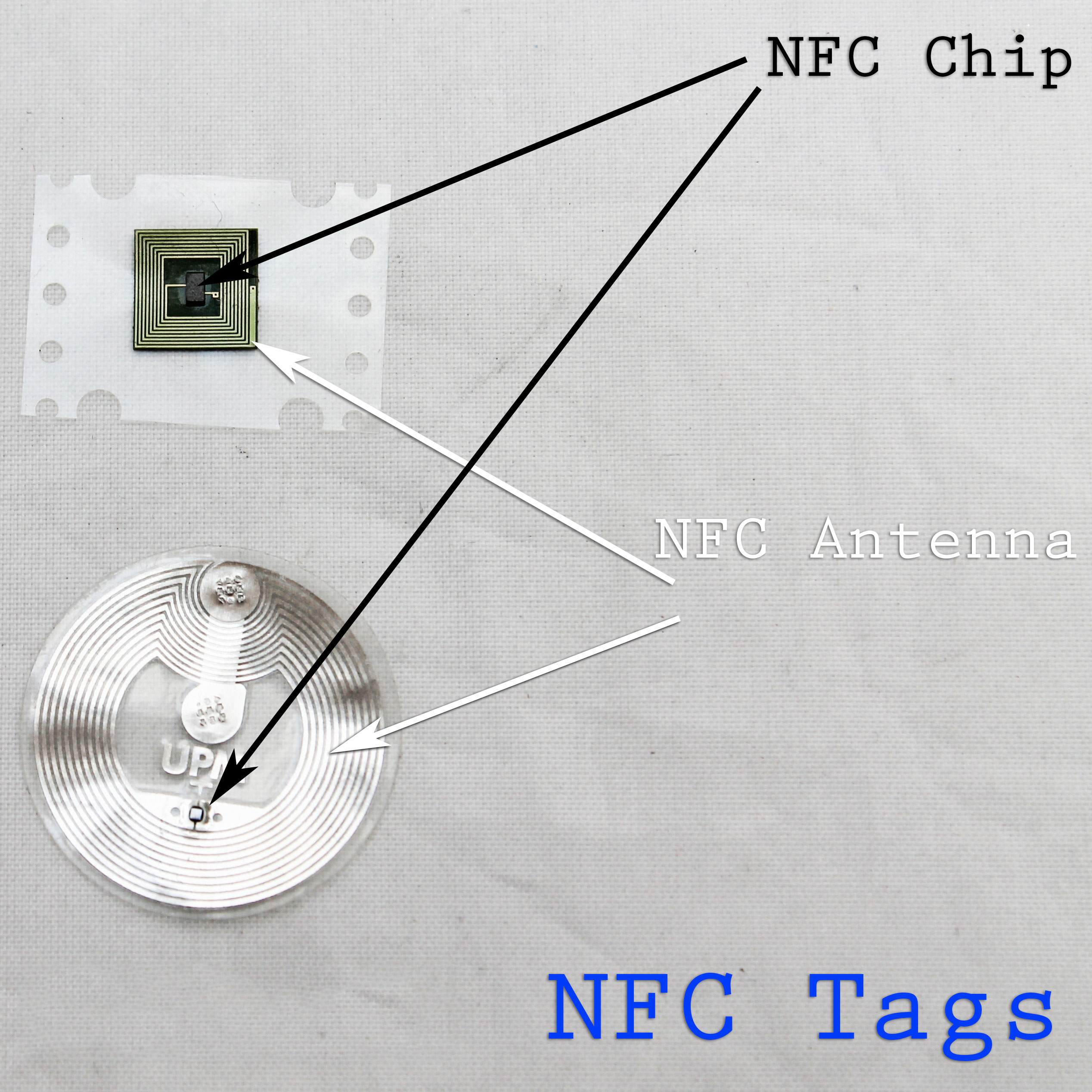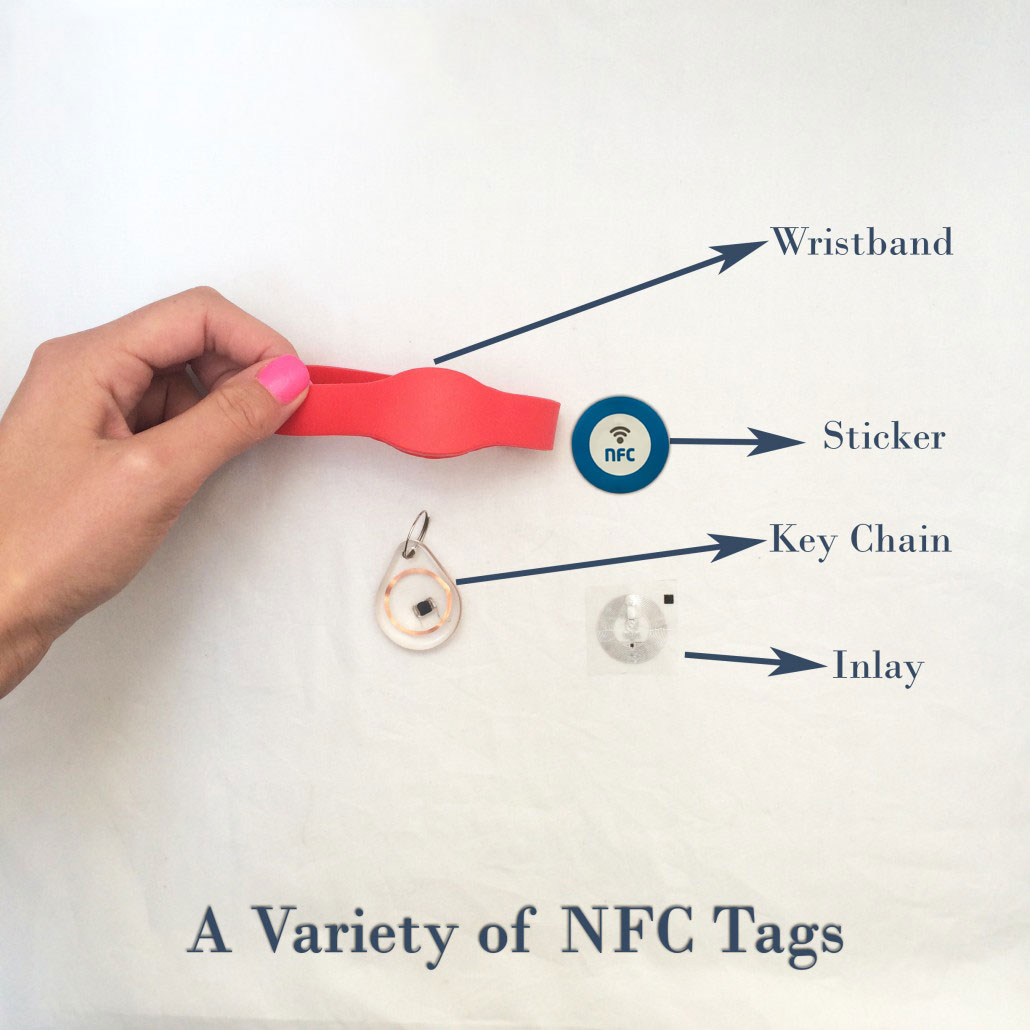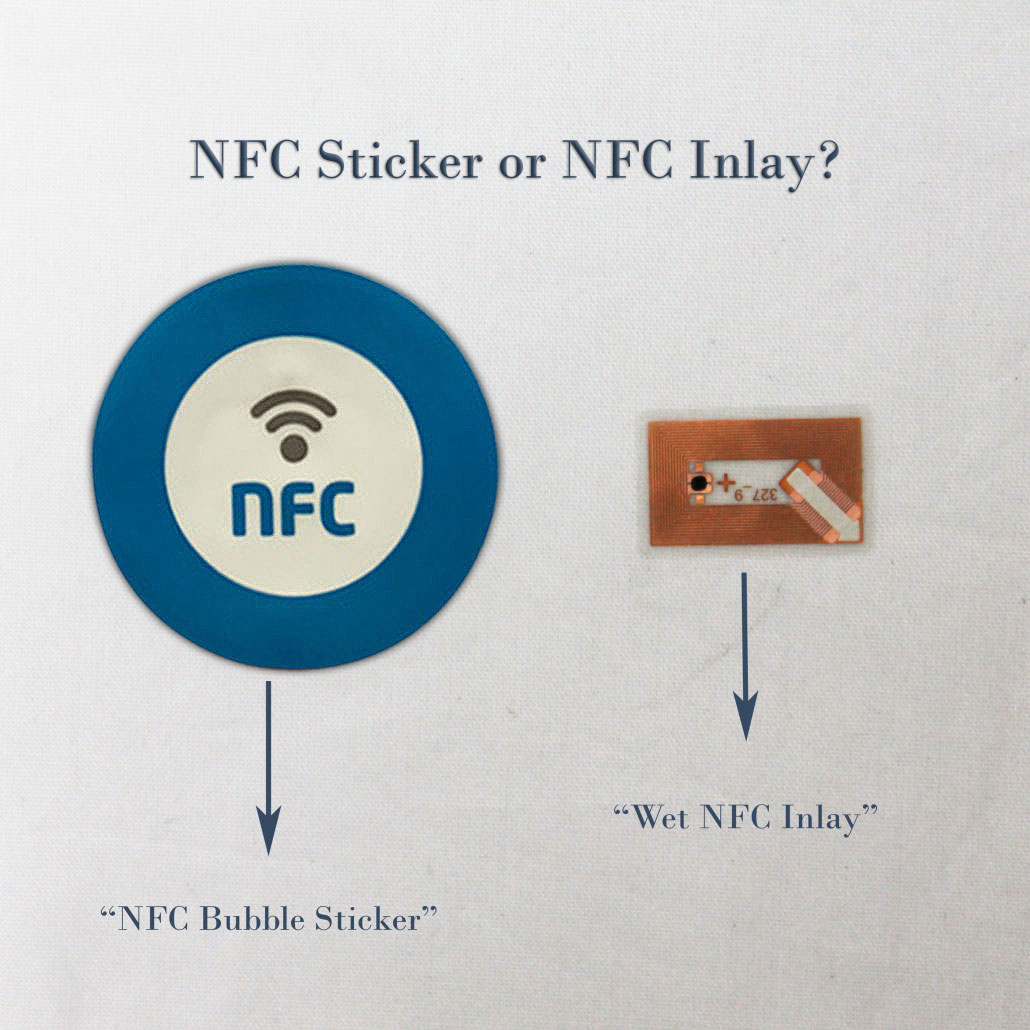The terms NFC Tag, NFC Chip and NFC Sticker are often used interchangeably. Though someone familiar with NFC may understand what you mean by using these terms, it is important to note that NFC tags, chips and stickers are not one in the same. When discussing near field communication (NFC) it is important to adopt the correct terminology to ensure clarity when ordering NFC products.
NFC CHIP:
An NFC chip, or integrated circuit (IC) is a small black dot you can locate if you look closely at NFC inlays. From far away the NFC chip looks like a square or dot, up close it is much more intricate. The NFC chip is similar to a very small USB flash drive or SD card that stores the data you encode. The data may be your contact information, a website URL, or the password for your computer.
 NFC ANTENNA:
NFC ANTENNA:
The NFC antenna is another important component of an NFC Tag. The antenna is the copper or aluminum component that looks like a wire coiling around the chip. The antenna interacts with your phone or NFC reader to transmit encoded data using radio frequencies. For example, if you use your phone to make a payment via NFC, the antenna is transmitting your payment information from your phone to the vendor’s payment terminal.
 NFC TAGS:
NFC TAGS:
Combine the NFC chip and the NFC antenna into a finished product and you have an NFC inlay, a raw NFC tag that can easily be converted into other products. NFC inlays represent the most basic NFC tag; looking at an NFC inlay you can visually identify the chip and antenna. Inlays are often confused with NFC stickers as both products can offer adhesive backing. Inlays are generally small, inexpensive and cannot be customized as extensively as stickers. NFC stickers include a paper face component which allows the adhesive NFC tags to take on a wider scope of shapes, sizes and customization options. Though a sticker may come as a 30 mm x 30 mm square, the NFC inlay within may only extend to 25 mm x 25 mm.
NFC inlays are limited by the antenna’s size as the film of an inlay only extends a few millimeters beyond the antenna. Due to inlay properties, white inlays can only support thermal printing which consists of 2D barcodes or black ink text.
With NFC tags in so many forms it’s easy to understand why someone just familiarizing themselves with NFC technology could become confused! We offers a variety of NFC tags in blank, ready made, printable and custom formats. NFC tags can be water resistant or waterproof, can be designed to be carried, worn or affixed to many surfaces.
 For more information about NFC TAGS, please visit:
For more information about NFC TAGS, please visit:
http://www.rfidhy.com/rfid-products/nfc-label/
From: https://gototags.com/






